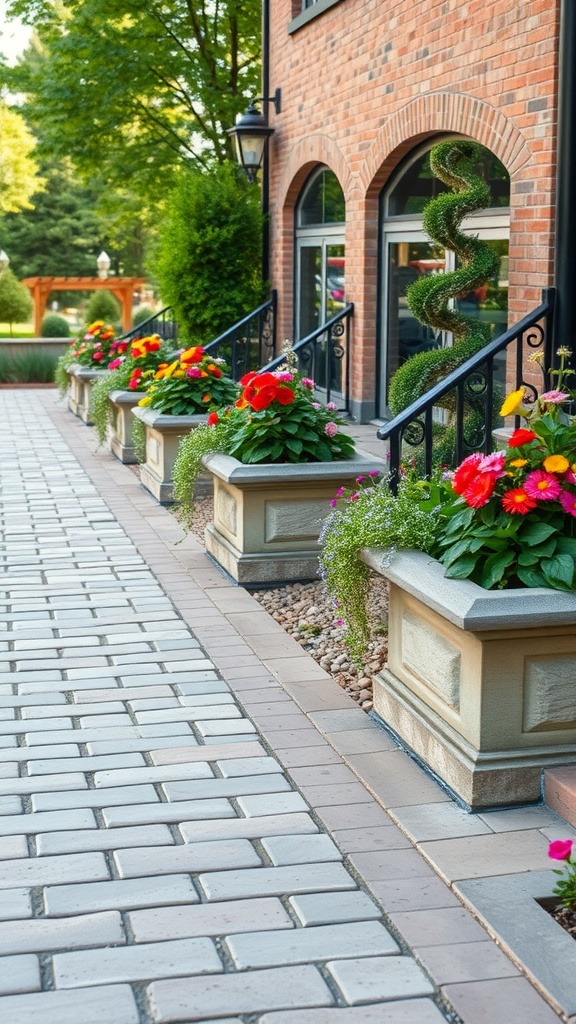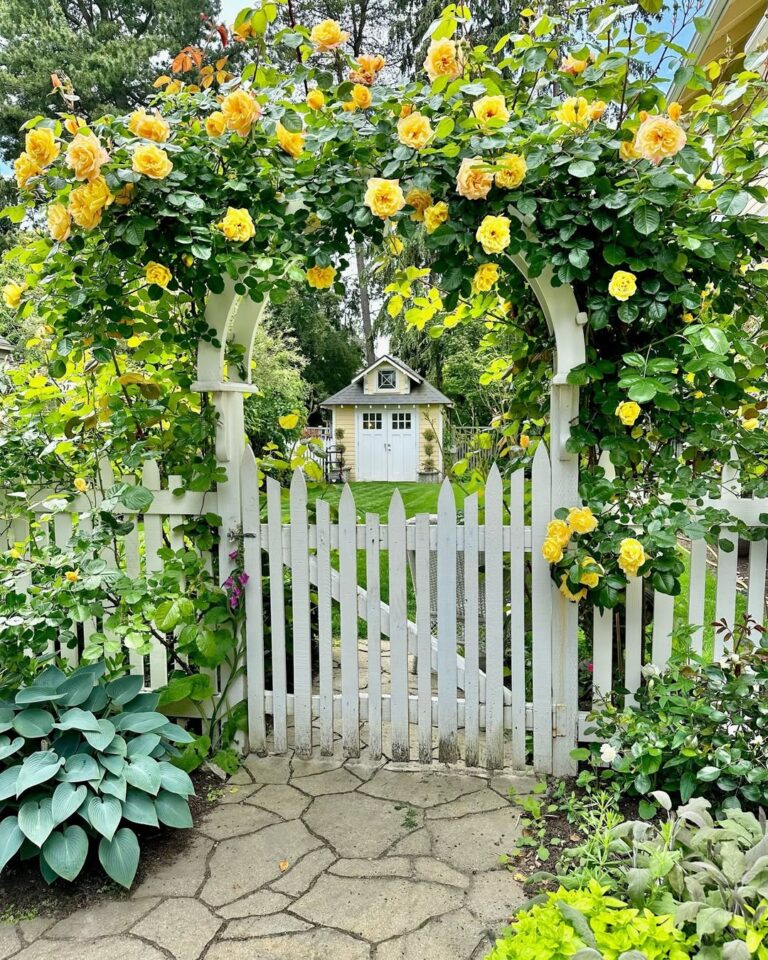25 Swale Landscaping Ideas to Transform Your Yard
Swales are an eco-friendly landscaping feature that can help manage water flow while enhancing the beauty of your outdoor space. These natural channels direct rainwater away from your home and prevent erosion, all while adding an aesthetic touch to your yard. Whether you’re aiming for a functional solution or want to add a unique design element to your garden, these 25 swale landscaping ideas will inspire you to make the most of this landscape feature.
1. Rain Garden Swale Design
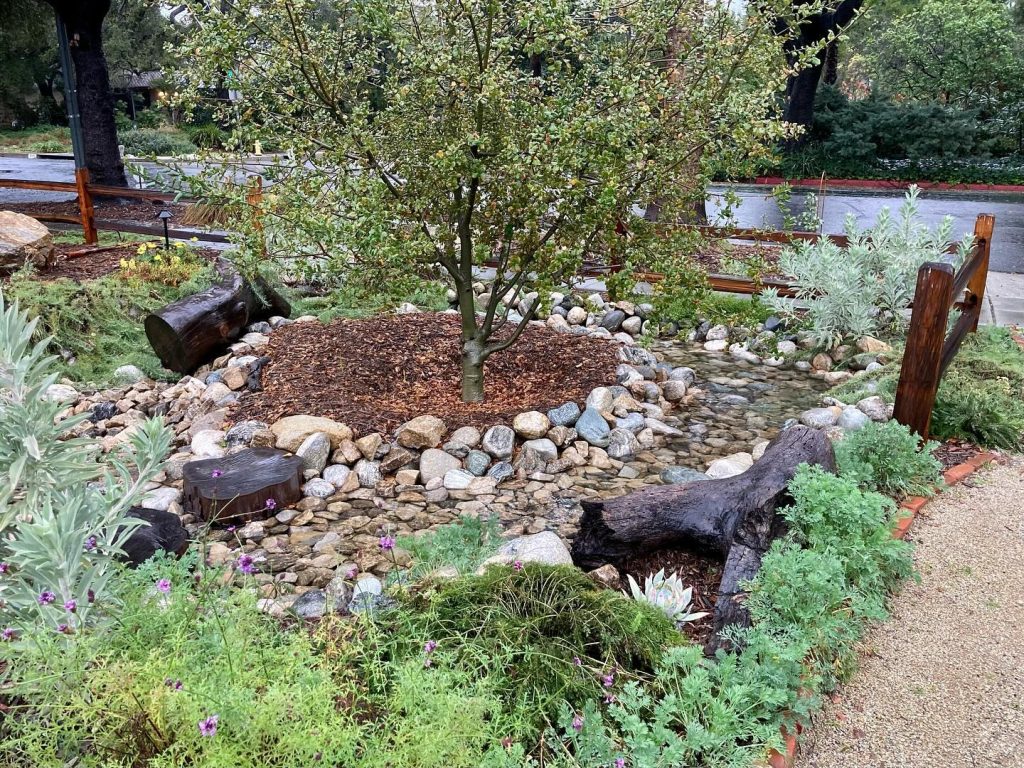
A rain garden is a simple yet effective way to manage stormwater runoff while creating a vibrant, natural space in your yard. A swale designed as a rain garden incorporates native plants that thrive in wet conditions, helping to filter out pollutants and absorb excess rainwater.
To create this type of swale, choose plants such as coneflowers, black-eyed Susans, and asters. These plants not only filter water but also provide seasonal interest with their colorful blooms. Be sure to design your swale with a slight slope to encourage water flow toward the garden area. The key to a successful rain garden is using plants that can tolerate both wet and dry conditions.
In addition to their environmental benefits, rain gardens are also low-maintenance, requiring only occasional weeding and pruning. The swale will naturally drain after heavy rainfall, allowing the plants to thrive without standing water for too long.
2. Gravel-Lined Swale for Better Drainage
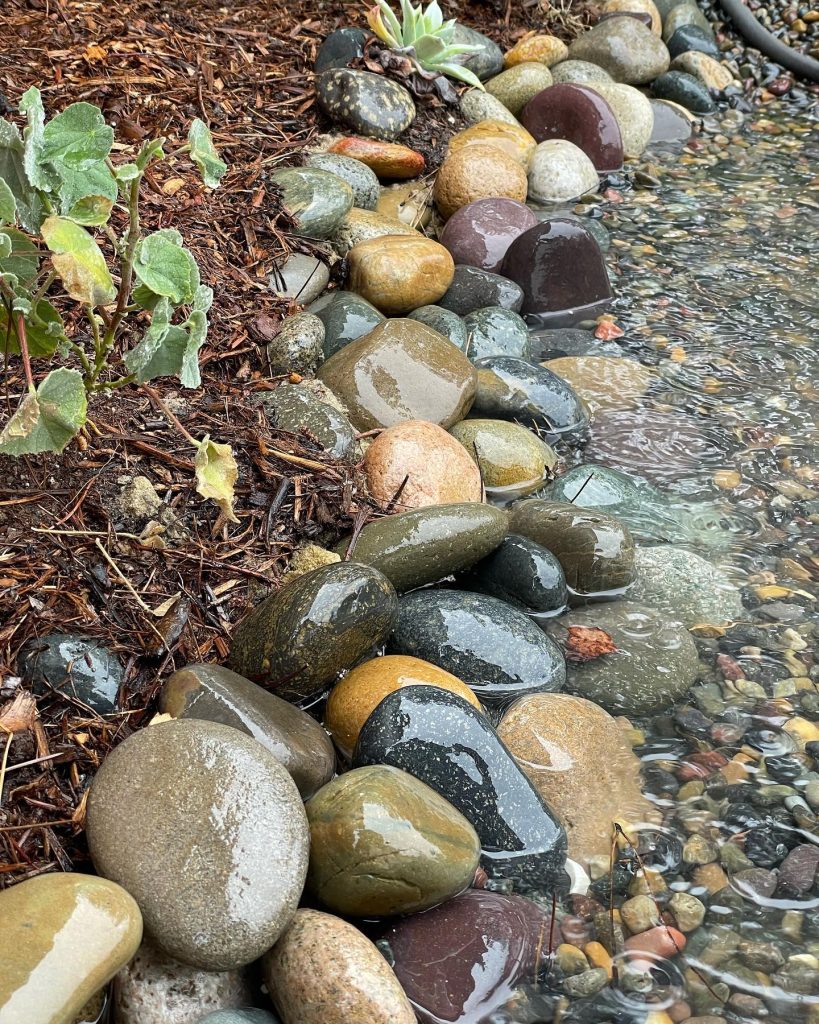
A gravel-lined swale is a practical and attractive solution for areas prone to heavy rainfall or flooding. Gravel promotes excellent water drainage, allowing rainwater to flow through it without pooling. This design not only helps direct stormwater away from your home but also creates a clean, minimalist look that complements various garden styles.
To create a gravel-lined swale, start by digging a shallow trench along the desired path. Fill the trench with small river rocks or pea gravel. This material is highly effective at filtering and draining water. You can even mix in a layer of landscaping fabric underneath the gravel to prevent weeds from growing.
Consider adding plants like ornamental grasses or creeping thyme along the edges of the swale for added visual appeal. These low-maintenance plants thrive in gravel areas and can handle the moisture fluctuations typical of a swale.
3. Flowering Plants Along Your Swale
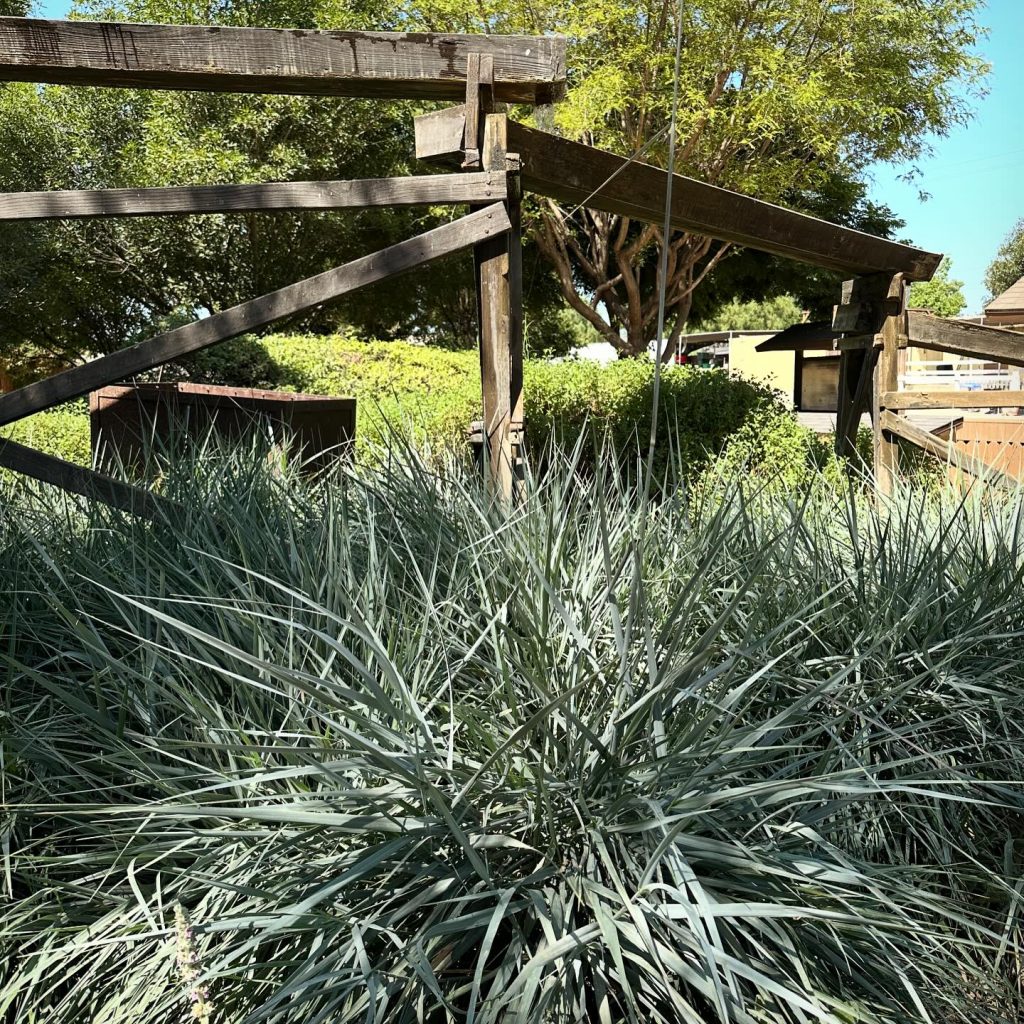
Incorporating flowering plants along your swale creates a beautiful contrast between the natural, flowing water and the vibrant colors of the blooms. Flowers like coneflowers, black-eyed Susans, and coreopsis are perfect for swales because they are drought-tolerant, deer-resistant, and low-maintenance.
When choosing flowers for your swale, consider the amount of sun the area receives. For sunny spots, try planting daylilies or lavender, which love the warmth and can tolerate occasional flooding. For shadier swales, hostas or astilbes are great options, as they thrive in moist, low-light conditions.
Flowering plants along your swale add visual interest and attract pollinators like bees and butterflies. The plants will not only beautify your yard but also contribute to a healthy, thriving ecosystem.
4. Edging with Natural Stone

Natural stone edging is an elegant way to define your swale while preventing soil erosion. Stones like flagstone, fieldstone, or river rock complement the natural landscape and add texture to your swale. Edging with stone helps contain the flow of water and prevents the sides of your swale from eroding over time.
For a more formal look, arrange the stones in a straight line, or for a more rustic feel, create a meandering edge that mirrors the natural flow of the water. You can also layer the stones to create a terraced effect, which will add depth and interest to the swale.
In addition to its aesthetic benefits, natural stone edging stabilizes the swale and ensures that water stays within its designated path. Choose stones that are durable and can withstand constant exposure to water.
5. Native Grasses for Erosion Control

Native grasses are ideal for planting along the edges of your swale because they help prevent erosion while providing a natural, flowing appearance. Grasses like switchgrass, blue grama, and little bluestem are perfect for swales because they thrive in both wet and dry conditions, making them ideal for managing fluctuating moisture levels.
These grasses grow tall and provide excellent coverage, helping to stabilize the soil around the swale. They are also drought-tolerant and require minimal care once established. In addition, their deep root systems improve water absorption, further enhancing the swale’s drainage capabilities.
Native grasses also add texture and movement to your landscape. As the wind blows through the grasses, they sway and create a beautiful, natural effect that complements the flowing water of the swale.
6. Swale with a Dry Stream Bed Effect

A dry stream bed effect is a visually striking design that mimics the appearance of a natural stream, even when there’s no water flowing. This look is created by placing larger stones and pebbles along the bottom of the swale, creating the illusion of a meandering river or streambed.
To achieve this effect, start by selecting smooth, rounded river stones of various sizes. Lay them in a curved or zigzag pattern along the swale to mimic the natural flow of water. Fill in the gaps with smaller pebbles and gravel to add texture.
This design works especially well in areas where the swale will not always have standing water. The dry stream bed effect gives your landscape a dynamic, natural feel, even when the swale is dry. Consider adding plants like ferns or moss to the edges of the swale for extra visual appeal.
7. Swale with Low Maintenance Succulents

Succulents are a great option for a low-maintenance, drought-tolerant swale landscape. These hardy plants thrive in dry conditions and can withstand the fluctuating moisture levels in a swale. Varieties like sedum, hens-and-chicks, and agave are perfect for swales because they don’t require frequent watering and add a unique texture to your yard.
Succulents are also available in various colors and shapes, making them an excellent choice for creating a visually interesting swale. You can plant them in clusters or along the edges of the swale for a vibrant, desert-inspired look.
In addition to their beauty, succulents help retain moisture in the soil, making them an eco-friendly option for water conservation. They are also pest-resistant, requiring very little care once established.
8. Swale with a Fountain Feature

Adding a fountain to your swale creates a peaceful, relaxing atmosphere in your backyard. The sound of running water enhances the natural beauty of the swale while providing a focal point for your landscape. Choose a small, decorative fountain that fits the size and style of your swale.
To incorporate a fountain into your swale, place it at the lower end of the swale, where water naturally flows. You can also choose a solar-powered fountain to reduce energy consumption and make it an eco-friendly feature.
Fountains also attract wildlife, such as birds and butterflies, who will come to drink from the water or bathe in the fountain. This addition not only enhances the beauty of your yard but also creates a habitat for local wildlife.
9. Wooden Borders for a Rustic Look

Wooden borders are a simple yet effective way to create a rustic, natural look around your swale. Wood complements the organic flow of the water and adds warmth to your landscape. You can use untreated cedar, pine, or oak to create a natural border that withstands the elements.
To create the border, install wooden planks or logs along the edges of your swale. You can also create a low wooden fence around the swale for added definition. For a more rustic feel, opt for reclaimed wood or branches for a more informal, woodland-inspired design.
Wooden borders work well in both traditional and modern gardens, offering a flexible design element that enhances the natural beauty of the swale. Over time, the wood will weather and age, adding even more character to your landscape.
10. Permeable Pavers for Swale Paths

If you’d like to add a path through your swale, permeable pavers are an excellent choice. These pavers allow water to flow through them while providing a stable surface for walking. Permeable pavers are perfect for creating paths or walkways that run through the swale without disrupting the flow of water.
Choose pavers made from porous materials like concrete, brick, or stone. Arrange the pavers in a pattern that complements the natural flow of the swale. The gaps between the pavers will allow water to filter through and be absorbed into the ground below.
This solution provides an environmentally friendly way to create functional pathways while maintaining the integrity of your swale. The pavers are durable and easy to maintain, making them a practical option for both small and large swale designs.
11. Swale with Decorative Grass Plumes

Incorporating ornamental grasses with feathery plumes along your swale adds height, texture, and visual interest. Plants like pampas grass, fountain grass, or feather reed grass have tall, airy blooms that move in the wind, creating a dynamic effect in your landscape.
These grasses are perfect for areas with fluctuating moisture levels, as they are tolerant of both dry and wet conditions. The plumes of these grasses can provide year-round interest, as they often remain attractive even in the winter months.
To enhance the swale’s design, plant these grasses in clusters along the edges, or use them as a backdrop for other plants. Their soft texture contrasts beautifully with the hard lines of rocks or stones in the swale, adding a natural flow to the overall look.
12. Incorporate Small Trees for Shade

Adding small trees to your swale not only provides shade but also helps to break up the flow of water and prevent erosion. Trees like dogwoods, serviceberries, and flowering cherries are excellent choices because they thrive in moist soil conditions. They also provide seasonal interest, with stunning blooms in the spring and colorful foliage in the fall.
When planting trees in your swale, be sure to space them out to allow for proper growth. You can plant them along the edges or even at the center of the swale to create a focal point. The shade from these trees will help cool the surrounding area and create a more comfortable space for relaxing or entertaining.
Trees also help to reduce the amount of water runoff by absorbing rainwater through their roots, contributing to the overall health of your landscape.
13. Swale with Multi-Tiered Plantings

Multi-tiered plantings add depth and texture to your swale by creating varying levels of height. This design approach mimics the natural layering of vegetation in the wild, where smaller plants grow at the bottom and taller plants rise above. By incorporating this type of layout, you can create a dynamic and visually appealing swale.
Start by planting low-growing ground covers, such as creeping thyme or sedum, at the bottom of the swale. These plants will help retain moisture and prevent soil erosion. Next, add medium-height plants like ferns or daylilies. Finally, plant taller plants such as ornamental grasses or flowering shrubs at the top of the swale for a more dramatic effect.
This multi-level design not only helps with water retention and drainage but also enhances the aesthetic appeal of your yard by creating a rich, layered look.
14. Swale with Natural Wood Logs

Incorporating natural wood logs into your swale design adds an earthy, woodland element that complements the natural flow of water. Logs can be used in various ways, such as creating a rustic border around the swale or placing them strategically to slow down the flow of water.
To create a natural wood log feature, use large, untreated logs and arrange them along the sides of the swale or within the channel itself. The logs will act as natural barriers that guide water, preventing soil erosion and helping to create a more stable structure.
Wood logs blend beautifully with native plants and add a textural contrast to the smooth flow of water. They also provide habitats for wildlife, adding an ecological benefit to your swale design.
15. Create a Swale with a Wildflower Meadow

A swale designed with a wildflower meadow is an excellent way to blend eco-friendliness with beauty. Wildflowers are not only aesthetically pleasing but also support local pollinators, such as bees and butterflies. The diverse colors and textures of the flowers create a lively, dynamic effect in your yard.
To create a wildflower meadow in your swale, choose native species that thrive in your region’s climate. Some great options include blanket flower, black-eyed Susan, and purple coneflower. These flowers are drought-tolerant and can handle the moisture fluctuations typical of a swale.
Wildflower meadows also require minimal maintenance once established. With their deep root systems, wildflowers help prevent soil erosion and improve water absorption, making them an ideal addition to your swale.
16. Add a Swale Bridge for a Charming Touch

Adding a small wooden bridge across your swale introduces a charming, rustic element to your landscape while creating a functional crossing. The bridge adds a focal point to the yard and enhances the visual flow of the swale, making it an excellent feature for larger swale designs or gardens that include pathways.
Choose a bridge that complements the overall style of your yard, whether that’s a simple wooden plank bridge or one with decorative rails. This feature will allow you to cross the swale without disturbing the water flow and can be a lovely addition to any garden.
Bridges also create a sense of serenity, with the sound of water flowing underneath adding to the peaceful atmosphere. They also serve as a perfect vantage point to admire the natural beauty of your swale and surrounding landscape.
17. Swale with Large Rocks for a Dramatic Look

Large, statement-making rocks are perfect for creating a dramatic, rugged look in your swale. By incorporating large boulders or rock formations, you can create a natural water feature that resembles a mountain stream or riverbed. These large rocks slow the water down, preventing erosion and adding to the swale’s visual appeal.
To create this design, place large boulders along the edges or within the swale’s path. You can position them to look as though they were naturally placed by the flow of water, enhancing the organic, earthy feel of your yard. The rocks will provide a sturdy structure and prevent soil erosion, while their varied shapes and sizes add visual interest.
This look works well in larger landscapes where you want the swale to be a bold focal point. Additionally, the rough textures of the rocks contrast beautifully with the softness of surrounding plants, creating a balanced design.
18. Swale with Elevated Berms for a Unique Design

Elevated berms on either side of your swale can create a visually interesting and functional design. Berms are raised mounds of soil that help direct water flow and prevent erosion, and when paired with a swale, they add structure and definition to the landscape.
To build berms, use soil from your existing yard or purchase landscape soil and mound it along the swale’s sides. Plant these berms with low-maintenance shrubs, grasses, or flowers that help stabilize the soil and create a more visually dynamic effect. You can also plant larger shrubs or small trees to further enhance the berms’ appearance.
Elevated berms create a distinctive landscape that gives your yard a more sculptural, layered look while improving drainage and water flow management.
19. Swale with a Stone-Lined Pathway

A stone-lined pathway running through the swale offers both a functional and aesthetic benefit. This pathway allows you to navigate your swale without disturbing the water flow, and the stones create a textured contrast against the soft greenery and flowing water.
For this design, use materials like flagstone, cobblestones, or even river rocks to line the path. Choose materials that complement your overall landscape style, whether that’s a rustic garden or a modern, minimalist look.
A stone pathway can also be integrated into a larger garden design, providing a functional walking route while enhancing the natural flow of the water through the swale. Adding moss or creeping plants along the edges of the stones creates a soft, blended look.
20. Swale with Raised Stone Borders for Definition

Raised stone borders offer a refined, well-defined edge to your swale. These borders help contain the water, prevent erosion, and create a structured design that’s visually appealing. Raised borders also add height to the swale, making it a more prominent feature in your landscape.
Use larger stones or stacked rock walls to form the raised border, ensuring they’re placed securely to withstand water pressure. Choose stones that blend with the natural surroundings, or use contrasting materials to create a bold design.
This style works well in formal garden designs or areas where you want the swale to stand out as a key landscape feature. The raised stone borders help to create a more polished, manicured look while still maintaining the swale’s natural functionality.
21. Swale with a Curved, Meandering Path

A meandering, curved swale path enhances the natural beauty of your landscape by mimicking the gentle flow of a stream. The winding path creates visual interest, guiding the viewer’s eye through the garden. This design is perfect for larger yards or areas where you want the swale to blend seamlessly into the landscape.
The gentle curves of the swale can be defined with stones or plants, such as ferns or low-growing grasses. By creating a flowing, natural path for the water, you will add both function and beauty to your yard.
Meandering swales can also be used to break up the flow of water, slowing it down as it moves through the yard. This helps with erosion control and improves water absorption, making it an eco-friendly landscaping option.
22. Swale with Rainwater Harvesting System

Integrating a rainwater harvesting system into your swale design offers both environmental and practical benefits. You can channel water from the swale into a rain barrel or cistern to collect and store rainwater for later use in your garden or around your home.
To incorporate a rainwater harvesting system, install a downspout at the end of your swale where water naturally flows. This downspout can be connected to a barrel or storage tank. Once collected, the rainwater can be used to irrigate your plants or garden, reducing your reliance on municipal water.
This feature adds a sustainable, eco-friendly element to your swale while providing you with a source of free water for your garden.
23. Swale with Ornamental Trees for a Focal Point

Adding ornamental trees along your swale helps create a striking focal point in your landscape. Trees like Japanese maples, weeping willows, or flowering dogwoods add height, color, and texture to your swale while also contributing to the ecological health of the area.
Plant these trees along the edge or at the center of your swale for maximum impact. Their roots will help absorb water, and the shade they provide will reduce evaporation in the surrounding area, keeping the soil moist.
Ornamental trees also create a beautiful backdrop for other plants in your swale and can offer seasonal interest with their changing leaves and blossoms.
24. Incorporate Moss for a Soft, Natural Look

Moss is a wonderful addition to a swale, creating a soft, natural look that complements the flowing water and surrounding plants. Moss thrives in moist environments, making it the perfect plant for a swale. It adds texture and a lush, green appearance without requiring much care.
Consider adding moss between rocks or along the sides of the swale to create a seamless, woodland-inspired design. It works beautifully with other moisture-loving plants like ferns or hostas and helps to retain moisture in the soil, preventing it from drying out too quickly.
Moss also adds a timeless, serene quality to the landscape, making it a great choice for enhancing the peaceful atmosphere of your swale.
25. Swale with Decorative Wood Chips

Decorative wood chips can be used as a ground cover in your swale, adding texture and visual interest while helping with water retention. Wood chips are biodegradable and break down over time, enriching the soil and improving the overall health of your landscape.
Spread a layer of wood chips along the bottom of your swale to create a natural, rustic look. The chips will help absorb moisture and prevent weeds from growing. As the wood chips decompose, they will provide nutrients to the plants surrounding the swale.
This affordable option is ideal for anyone looking to add a natural, rustic element to their swale design while promoting water retention.
Conclusion
Swales are an essential landscape feature that can serve both functional and aesthetic purposes. From creating rain gardens to integrating water-saving features like rainwater harvesting, swales help manage stormwater runoff while enhancing the natural beauty of your yard. By incorporating any of these 25 swale landscaping ideas, you can transform your outdoor space into a serene, sustainable environment that both you and the planet will appreciate. Whether you prefer a simple, minimalist design or a more elaborate, multi-tiered feature, there’s a swale solution that fits your style and needs.





